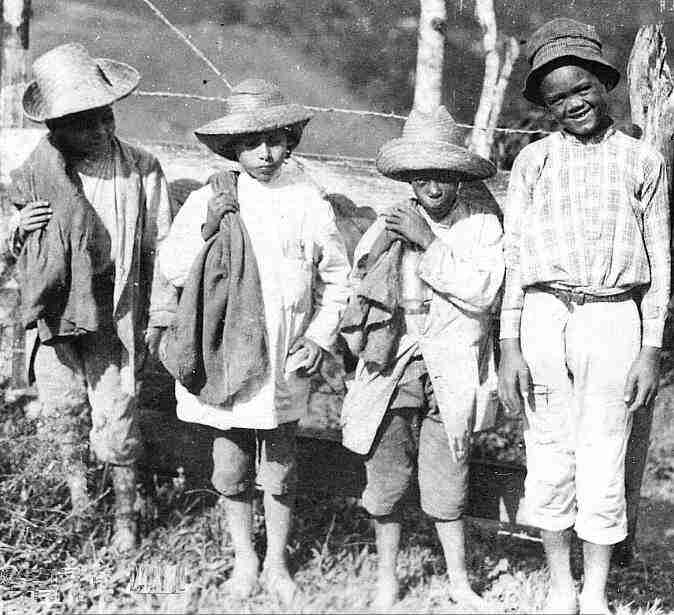
Figure 1.--These boys were photographed in rural Puerto Rico. The photographed is not dated, but was probably taken in the 1930s. We still see the lingering influence of camapesino clothing |

|
We have at this time very limited information on Puerto Rico. Our archive is very small and as a result we cannot yet sketch out chronolohical trends in any detail. We know next to nothing about the 19th century yet. We have not yet found any 19th century pphotographs. This was until 1898 the period of Spanish colonial control. The United Statesaquired the island during the Spanish American War (1898). This of course does not mean that photographs were not taken during the Spanish era, we just have not found any yet. We do have some limited information on the 20th century. We note very significant differences as to how children dressed depending on demographic and social class variables. These differences were notable when the Americans arrived. As far as we can tell, Puerto Rican boys soon after the American era began adopting American styles--at least families in comfortable circumstances. The campesino-style clothing continued to be work by working-class and rural families for some time into the 1930s. The boys here are a good example (figure 1). This all was chamging by the time of World War II. The Puerto Rican brothers and their sister on the previous page look to have been photographed during World War II. The clothes look rather American to HBC. Three of the children were reportedly named Josefina, Poldo, and Frank. Note that the boys wear long pants rather than knickers. Even though America was an important fashion influence, we believe that because of climate, knickers and long stockings and knee socks were not commonly worn in Puerto Rico. This looks to be an affluent family photographed in the garden of their home. The boys have rather modern looking suits while the girl has a rather 1930s looking dress. And by the 1950s had largely disappeared. Puerto Rican boys were basically wearing American stlyles adjusting for climate and income differences.
We have at this time very limited information on Puerto Rico. Our archive is very small and as a result we cannot yet sketch out chronolohical trends in any detail. Puerto Rico was a backwater of the Spanish Empire. It was one of the first Spanish colonjies in the caribbean (1508). But like Cuba was retained by Spain when the rest of its Ameriucan empire was list (early-19th ccentury). The economy like most of the Caribbean by the 19th century was poor and with few profitable enterprises. Unlike Cuba, there were few plantations. Agriculture dominated the economy, but was dominated by small family farms. The econiomy of course affected the clothes people could afford. Much of the population still wore campesion style white or off-white clothing. The more affluent sector of the population wore styles prevalent in Spain. Climate of course was another factor. We know next to nothing about the 19th century yet. We have not yet found any 19th century photographs. This was until 1898 the period of Spanish colonial control. The United Statesaquired the island during the Spanish American War (1898). This of course does not mean that photographs were not taken during the Spanish era, we just have not found any yet.
We do have some limited information on the 20th century. We note very significant differences as to how children dressed depending on demographic and social class variables. These differences were notable when the Americans arrived. As far as we can tell, Puerto Rican boys soon after the American era began adopting American styles--at least families in comfortable circumstances. The campesino-style clothing continued to be work by working-class and rural families for some time into the 1930s. The boys here are a good example (figure 1). A factor in adopting American fashions was the substantial number of Puerto Ricans who migrated to the continental United States and influenced friends and families back on the island. This was facilitated when Congress passed the Jones Act making the Puerto Rican people United States citizens (1917). This all was chamging by the time of World War II. The Puerto Rican brothers and their sister on the previous page look to have been photographed during World War II. The clothes look rather American to HBC. Three of the children were reportedly named Josefina, Poldo, and Frank. Note that the boys wear long pants rather than knickers. Even though America was an important fashion influence, we believe that because of climate, knickers and long stockings and knee socks were not commonly worn in Puerto Rico. This looks to be an affluent family photographed in the garden of their home. The boys have rather modern looking suits while the girl has a rather 1930s looking dress. The great migration from Puerto Rico to the Contunental United States began after World War II (1950s). By this time the clothing diiferences Puerto Rico and the United States disappeared. Puerto Rican boys were basically wearing American stlyles adjusting for climate and income differences.
Navigate the Boys' Historical Clothing Web Site:
[Return to Main Puerto Rico page]
[Introduction]
[Activities]
[Biographies]
[Chronology]
[Cloth and textiles]
[Clothing styles]
[Countries]
[Topics]
[Bibliographies]
[Contributions]
[FAQs]
[Glossaries]
[Images]
[Images]
[Links]
[Registration]
[Tools]
[Boys' Clothing Home]
Navigate the Boys' Historical Clothing Web Site:
[Return to main country page]
[Australia]
[Canada]
[England]
[France]
[Germany]
[Ireland]
[Italy]
[New Zealand]
[Scotland]
[Spain]
[United States]
